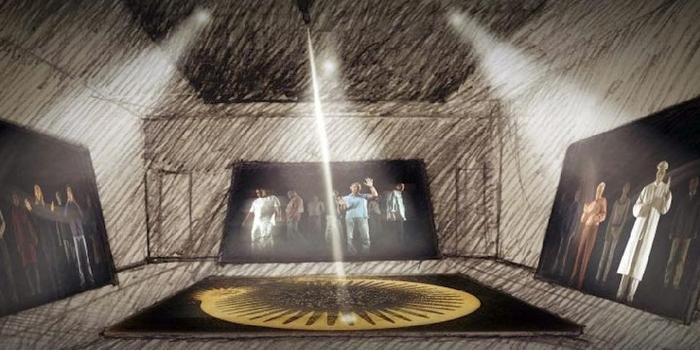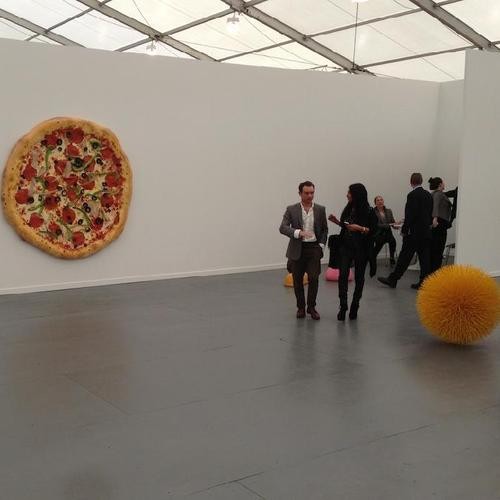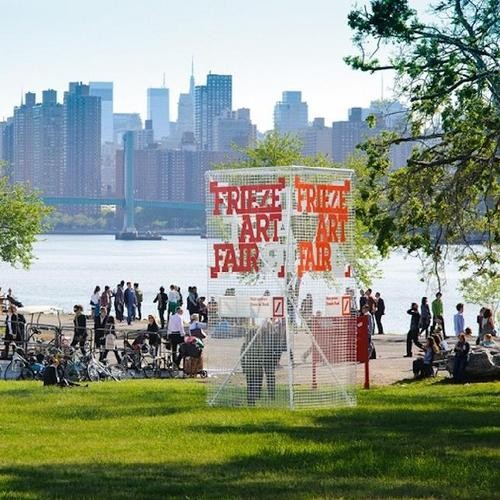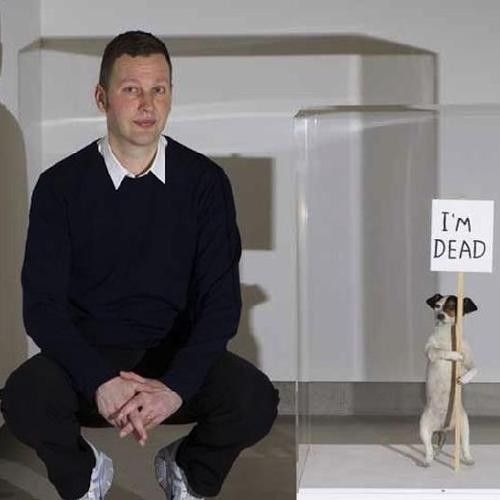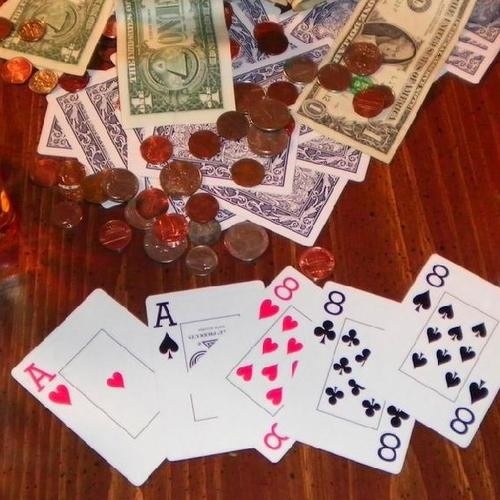— THE BIG STORY —
Now that the Vatican has released details about its inaugural pavilion in the Venice Biennale next month—an uncommon mashup of the secular and the sacred that has been in the works since 2009—visitors to the world's biggest exhibition can expect to a nuanced and awkward truth head on: the glories of the Renaissance are millions of light years away from the art of today.
First, those details. The pavilion has been organized around the same theme as the Sistine Chapel—the first few chapters of Genesis—and to drive home that connection its entranceway will contain a triptych by the late Italian artist Tano Festa riffing on details from Michelangelo's masterpiece. Inside, the pavilion is split into another tripartite formation: "Creation," an interactive video by Studio Azzurro in which female inmates and deaf-mutes tell their stories; "De-Creation," a series of 18 large photos by Magnum photographer Josef Koudelka; and "Re-Creation," a quintet of abstract multimedia "paintings" inspired by Arte Povera that are the work of American artist Lawrence Carroll, a dOCUMENTA alumn collected by the Guggenheim and Los Angeles MOCA.
The show has been arranged by Micol Forti, director of the Vatican's modern and contemporary art department, a little-known sliver of the extraordinary Vatican Museums responsible for the Collection of Modern Religious Art—that little-remarked-upon stretch of donated paintings by artists from van Gogh to Fontana and Botero that most visitors to the Holy See skip over on their way to the Sistine Chapel. The pavilion is part of a major push that the Vatican has been making in recent years to re-engage with living artists through such some-what successful attempts as a conference of contemporary artists that Pope Benedict XVI held in the Sistine Chapel in 2009 (250 came, an equal number declined) and a new room dedicated to materials from the Matisse Chapel in Vence that Forti opened in the Museums in 2010.
Artists, as the poor RSVP rate to Benedict's conference attests, have been decidedly lukewarm about the Vatican's outreach. Why? Unlike the age of Sistine Chapel commissioner Pope Julius II, when Catholicism was the unquestioned common worldview of the cosmopolitan West and the church was at the center of both art and scholarship, today that's not exactly the case. Instead, the Catholic church stands as a beacon of pre-Enlightenment thought, secrecy, exclusion (no women priests, gays, or contraception), and corruption (child abuse, financial mismanagement)—exactly the kinds of preferred targets of this secular era's artists, who by and large pride themselves on liberality, skepticism, and criticality.
The ideological mastermind behind the pavilion, Cardinal Gianfranco Ravasi, has emphasized that the show's artworks are not meant to be liturgical, and that the debut at the Biennale is meant to "create an atmosphere of dialogue between art and faith." What the church is likely to find when the Biennale opens next month is that these days there is a prickly and vocal interlocutor in the conversation between art and faith: politics. — Andrew M. Goldstein
— QUOTE OF THE WEEK —
"I honestly found it a little peculiar that there were so many people engaged and benefiting from so many aspects of the arts ecosystem, yet there were no means to sustain and make viable that ecosystem…. The bottom line for me is that art is really important. It enriches your life in a significant way and I would like to encourage everyone that has an interest in art to support the maker." — Artspace chairman Christopher Vroomin a Wall Street Journal spotlight on his other, philanthropic organization, Artadia, which supports emerging artists with targeted grants
— MUST READ —
"Being Damien Hirst Was difficult" — Britain's richest living artist let loose a number of revealing details about his past battles with drugs and alcohol in an interview with BBC Radio 4's Desert Island, including the barely funny story of how he thought he'd lost his £20,000 Turner Prize award only to later discover that he spent it all on a bar tab for a night of revelrous drinking. (Independent)
Meet Buster Balloon, Balloonist to the Stars — Inspired by a cursory reference as Jeff Koons's balloon consultant in last week's profile of the American sculptor, Artinfo created their own mini-spotlight on Los Angeles-based artist Buster Balloon, who, apart from being commissioned to create balloon sculptures by Nickelodeon, J. Crew, and the Disney Channel, had a show of his work at New York's own Half Gallery in 2009. (Artinfo)
No Chance for Nighthawks Pilgrammage — Attendees to the Whitney Museum's latest exhibition of works by Edward Hopper may be encouraged to visit the site of Nighthawks, the American artist's most famous painting, but "Hopper Drawing" curator Carl Foster is quick to burst any potential bubbles, musing that the diner in the image is most likely an amalgamation of multiple mid-century New York locales, citing Hopper's proclivity for synthesizing. (NYM)
But Don't Get Greedy and Use the Flash — In light of more and more museum attendees sneakily skirting "No Photography" signs with surreptitious cell phone usage, institutions like the Metropolitan Museum of Art, the National Gallery of Art, and the Art Institute of Chicago are loosening their limitations on visitor photography, though the practice does come with some copyright complications, if not a social-media boost. (ARTnews)
Mo' MoMA, Mo' Problems — In his defense of the Folk Art Museum, which faces impending demolition by its neighbors and new owners at the Museum of Modern Art, New York Times architecture critic Michael Kimmelman suggests that some native New Yorkers are beginning to feel a bit miffed by the nonstop growth and creeping corporatism of the city's beloved repository of 20th-century art. (NYT)
French Phones to Fund Fun French Culture? — One of the recommendations made to French president François Hollande in response to his questions about funding the country's cultural activities involved taxing smart phones, tablets, and other internet accessible devices, newer distributors of cultural content that have skirted France's "cultural exception" policy, which taxes cinemas, radio, and TV stations in order to prevent a "globalizing influence of [the] entertainment industry." (CBC)
Girl With the Pearl Earring (and Paintbrush?) — In his newest book Vermeer's Family Secrets, art historian Benjamin Binstock proposes a new hypothesis to explain problematic paintings by Vermeer that dodn't quite match the rest of the artist's oeuvre: they were painted by his daughter Maria, star of one of his most famous works, while she apprenticed under her father in his studio. (NPR)
"A Critic to Be Reckoned With" — Art critic Ben Davis's much-anticipated first book 9.5 Theses on Art and Class has received its first review, which raves that the essay collection proves Davis to be "an intellectually clearheaded critic dishing out some tough truths" and "should be required reading for art professionals." (Publishers Weekly)
The Heroic Ai Weiwei Does It Again — The celebrated Chinese artist was walking down the street in Beijing when he witnessed a bloody brawl between two ethnic groups—one woman was lying bleeding on the street, other men were furiously pummeling each other without resistance from "meek" cops who were present—and filmed it, posting the footage online where it became a sensation. (YouTube)
As If Keith Harings Weren't Already Everywhere — Now you can see even more of his work in high resolution images and videos, as well as interactive timelines, an artist biography, and more on your Apple devices thanks to the new Keith Haring app produced by Art Intelligence. (Apple)
Now This Lady Has Taste — For its latest "Tastemaker" spotlight, Editorialist focused on art consultant and dealer Kate Bellin, who included a few well-chosen artworks from Artspace. (Editorialist)
— ART MARKET —
Christie's Holds Epic, World-Beating Sale — The bluest-chip auction house stunned the world with a $495 million contemporary art auction, the biggest auction of any kind ever, that set a slew of new records and showed the market to be spectacularly muscular right about now. (Artspace)
Richter Set's New Record at Sotheby's — Starting out the big week of sales, Sotheby's scored $293.6 million and saw a number of world records, including yet another new one for the German master, this time for one of his blurry photorealist paintings. (Artspace)
Phillips Hammers High Sums for Schutz and Warhol — A single Warhol painting of four Marilyns took in half of the auction's $78.6 million total. (Artspace)
What's Leonardo DiCaprio Doing in the Art World? — Find out everything you ever wanted to know about what the hearthrob actor is up to, what with his record Christie's charity auction and all. (Artspace)
Rebels Artists Fuel Establishment Riches —Souren Melikian points out the irony that "art produced… by young rebels who challenged the establishment," such as Basquiat, Pollock, and Lichtenstein, was the fodder for the biggest sale in history, with the proceeds going to far-from-anti-estabishment pockets. (NYT)
Disputed Banksy Back at Auction — The alleged Banksy street artwork, Slave Labor (Bunting Boy), which depicts a young boy stitching Union Jack flags on a sewing machine, and was first painted during the Diamond Jubilee of Queen Elizabeth II, is back at auction alongside works by Andy Warhol and Damien Hirst, despite protestations from the council that represents the district in which the painting was made. (NYT)
Everything You Need to Know About the Nahmads — Art writer Randy Kennedy has teamed up with two of the New York Times's veteran metro reporters to pen a sweeping portrait of the Nahmad clan, a famously quiet $3 billion art-powerhouse family—with a history of going after a third of the lots in evening auctions, only to put them in storage to resell later—that has entered an unwelcome spotlight ever since dealer Helly Nahmad's alleged gambling ring exploded in their faces. (NYT)
Art Is a Great Way to Launder Money — You may have gleaned this from reading the epic Nahmad piece cited above, but here's more evidence if you need it. (NYT)
EXPO CHICAGO Releases Exhibitor List — The Windy City art fair has announced that its sophomore edition this September will include 120 international galleries including David Zwirner, Luhring Augustine, James Cohan, GalerieLelong, and Marianne Boesky. (Press Release)
"Gladiatorial Combat" — Critic Roberta Smith weighs in on the Battle of the Megagalleries being waged currently between David Zwirner, Gagosian, and Hauser & Wirth, which are duking it out on the highest market stage with shows of new work by Jeff Koons and Paul McCarthy. (NYT)
— IN & OUT —
Mark di Suvero received the gold medal for the arts from the American Academy of Arts and Letters on Wednesday, along with novelist E.L. Doctorow, joining other sculptors like Louise Bourgeois and Richard Serra as being recognized by the Academy. (NYT)
This summer the Metropolitan Museum of Art has given over its lovely rooftop sculpture gallery to Pakistani artist Imran Qureshi, who painted lovely designs on the open-air space's floor in red paint that at first looks like an enormous quantity of splattered blood. (NYT)
The artist Meg Cranston was awarded this year's Artadia NADA Prize by jurors including Participant Inc. founder Lia Ganitano and Carnegie International curator Daniel Byers for her presentation at this year's NADA NYC fair, granting her only the second $4,000 prize the nonprofit arts organization has given in conjunction with the fair. (Press Release)
LACMA, Los Angeles's busiest museum, is debuting LACMA9 Art + Film Lab, a traveling "interactive space" designed by Jorge Pardo that will bring art and film culture to nine communities scattered around Southern California. (Press Release)
The Whitney Museum will premiere a new panoramic film work by T.J. Wilcox that features city-encompassing views from the artist's penthouse studio that he filmed every ay in September. (NYT)
Connie Butler, the departing MoMA drawings department chief curator, will become the Hammer Museum's chief curator, it turns out—not just the curator of it's "Made in L.A." biennial as previously revealed. (NYT)
Former Guggenheim director Thomas Messer, who ran the museum for 27 years—the longest run of any comparable museum director in U.S. history—and scored the coup of bringing on the Picasso-rich Thannhauser collection, a jewel of the institution, has passed away at age 93. (NYT)











